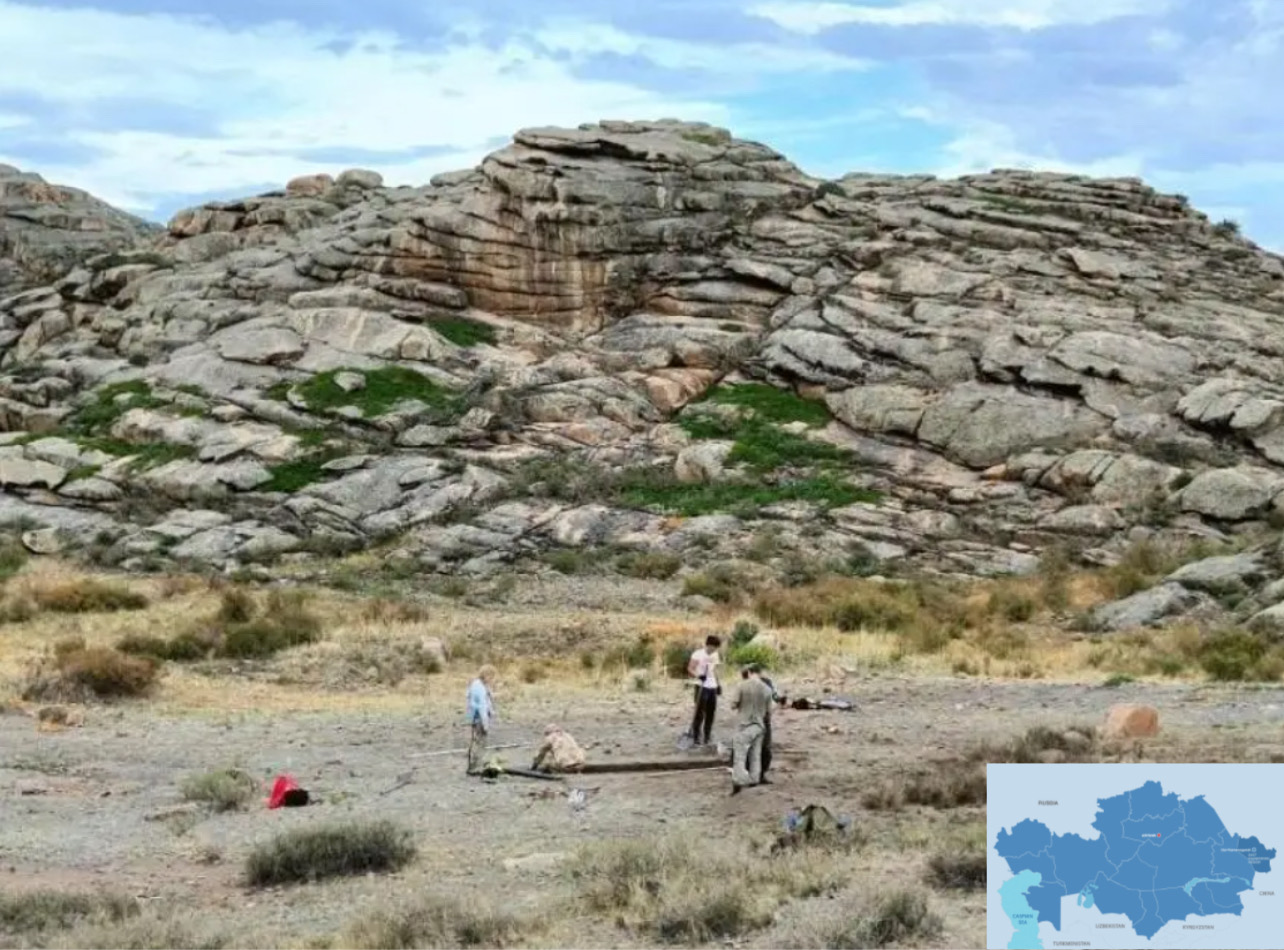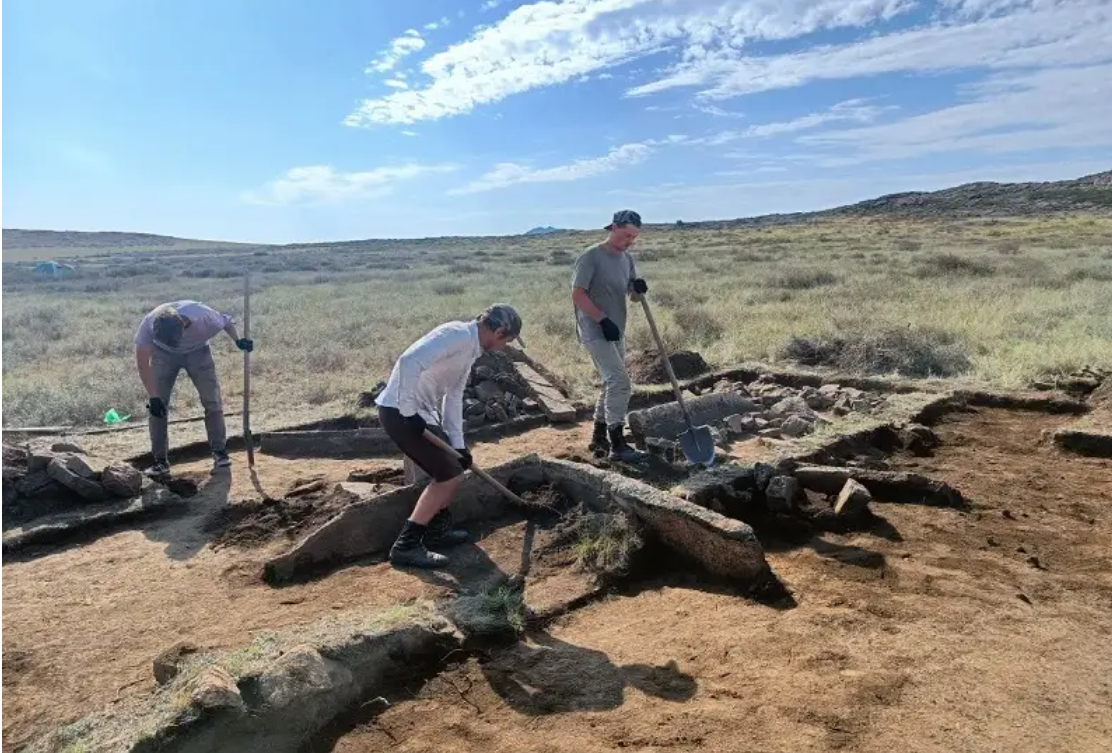ASTANA — The international archaeological expedition made remarkable discoveries that broadens understanding of the history and culture of Turkic people in the Altai region, reported Kazinform.

Photo credit: Professor Victor Mertz. Click to see the map in full size. The map is designed by The Astana Times.
Two significant findings stand out. The unearthing of Turkic settlements dating back to the seventh to ninth centuries in the Kalmak Kyrgan Mountains and the identification of a Turkic memorial statue from the eighth to ninth centuries in eastern Kazakhstan.
The project’s leader, Professor Victor Mertz from Toraighyrov University, highlighted the previous focus on Turkic burials and cult structures, noting that settlements had been relatively underexplored. A collaboration with Altai State University in Russia, Kazakhstan’s Institute of Archaeology named after Alkey Margulan, and Toraighyrov University, this expedition aimed to address this gap in Turkic history and culture research.
The discovered Turkic settlements represent a breakthrough in the study of the Turkic peoples’ material culture and their role in the history of the Altai.
These Turkic settlements differ in their locations from those of the early Iron Age and Bronze Age. Nestled amid rocky terrain, they feature well-designed living spaces, indicating their functionality in the activities of the Turkic people.

Photo credit: Professor Victor Mertz.
Apart from the settlements, the excavations yielded numerous artifacts, especially items related to metalworking, showcasing the advanced metallurgical skills of the Turkic people. This discovery serves as compelling evidence of their mastery of ironworking, a hallmark of Turkic culture.
Archaeologists from the Altai region also made another notable discovery in Kazakhstan: a Turkic memorial statue depicting a warrior from the eighth to the ninth century. Such statues were crafted to honor fallen warriors and were typically not associated with burial sites, highlighting their religious and cultural importance. This revelation marked a significant advance in the study of Turkic monuments in the Northern Altai region.
“We discovered ancient camping sites belonging to medieval nomadic communities just a few kilometers away from the memorial complexes. This discovery opens up new avenues for further research into the daily lives and activities of these ancient Turkic nomads,” said archeologist Sergey Grushin.


